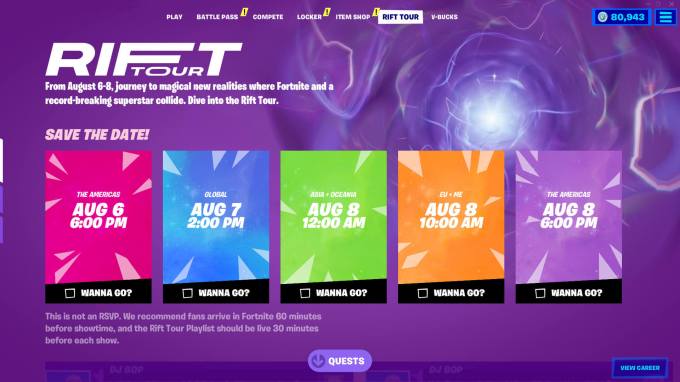- July 29, 2021
- by:
- in: Blog
Kuldeep Singh Rajput, the founder of Boston-based Biofourmis, is imagining a future where heart failure patients go home with a prescription, a wearable sensor and an app. Today, a new FDA designation gets the company one step closer to that goal. Founded in 2015, Biofourmis is a digital therapeutics company that develops software to “augment”
Kuldeep Singh Rajput, the founder of Boston-based Biofourmis, is imagining a future where heart failure patients go home with a prescription, a wearable sensor and an app. Today, a new FDA designation gets the company one step closer to that goal.
Founded in 2015, Biofourmis is a digital therapeutics company that develops software to “augment” patient care. So far, the company has raised about $145 million in funding, and has around 350 employees, Rajput estimates.
On Thursday, Biofourmis BiovitalsHF, a platform designed for heart failure medication monitoring received an FDA breakthrough device designation. Breakthrough device designation doesn’t signal FDA clearance, but it does allow for an expedited review process, and gives the company access to expertise from the federal agency during development.
Biofourmis has two major focus areas, says Rajput. The first is on developing digital therapies in conjunction with drug companies (apps for dosage delivery, for instance, or sensors that can monitor health). The second is on providing followup care for patients with acute conditions at home.
BiovialsHF is an example of the company’s forays into that first area of focus. So far, the company has developed digital therapies for a “pipeline” of conditions, like coronary artery disease or atrial fibrillation, and has digital therapies in the works for patients managing chemotherapy, or people dealing with chronic pain. The BiovitalsHF system, though, is the first to receive FDA breakthrough designation, and Rajput calls it the company’s “lead digital therapy.”
The BiovitalsHF product is a software platform designed manage medication for patients with heart failure. The idea is patients may initially get a certain prescription, but once they go home, they might need to adjust the levels of certain medication they’re taking.
Doctors do often treat heart failure with multiple medications, and doses may need to be changed over time. Particularly in the case of two types of medication, ACE inhibitors or beta-blockers, medication may need to be titrated – a process where a patient begins treatment on a low dose, and slowly up the dosage over time to achieve the optimal “target” dose.
However, titration is hard to achieve in real life – one 2020 study suggests that less than 25 percent of heart failure patients are on their optimal dosages (other studies suggest it’s less than one percent). Another 2017 commentary in Cardiac Failure Review estimates that just 29 percent of patients were on target doses of ACEs and 18 percent on their target beta blocker dose.
By contrast, in clinical trials, many to 50-60 percent of patients manage to obtain their optimal dosages, suggesting that there is a gap between how people take medicine in studies and how they do so in the real world.
BiovitalsHF is supposed to streamline the titration process once patients leave hospitals by collecting and analyzing data from a wearable device. That data, in theory, could be used to titrate the medication depending on a patient’s health status.
The software tweaks medication dosage using information from the patient, a wearable, and outside lab results. The wearable device would collect data like heart rate, respiration rate, stroke volume or cardiac output. Meanwhile, a patient might report their own symptoms into an app, and a physician might input lab results.
“Based on the data collected from the patients using sensors, and the mobile platform, we are able to automatically up titrate or down titrate and switch medication, so that patients are on the right, optimal dose,” says Rajput.
Patients would then receive a notification to let them know medications were going to be tweaked.
The BiovitalsHF program has only been tested in one proof-of-concept study (more on that later), but the Biovitals patient monitoring platform has been tested on other diseases as well.
For example, the Biovitals system was adapted to monitor 34 mild COVID-19 patients from the Queen Mary Hospital in Hong Kong who wore a biosensor 23 hours per day. A paper published in Scientific Reports suggested that the platform was able to predict whether a patient would deteriorate with 93 percent accuracy, and predict length of hospital stay with 78 percent accuracy.
The BiovitalsHF system is slightly different. While the system does aim to monitor patients, Rajput aspires to have the technology itself be administered as a treatment program.
In essence, a doctor might “prescribe” you three months of BiovitalsHF program in which the software itself might monitor patient outcomes and help determine dosage on its own.
The aim is to be able to market Biovials HF not just as a decision support software, but as a treatment regimen. The distinction is subtle, but it means that the company is trying to be more than a delivery device, and more like a drug in itself.
“The label of the product for digital therapy will have actual treatment claims as compared to just a monitoring tool for clinical decision support,” says Rajput.
Naturally, you need robust results to make these claims. The company has already done some early testing of the concept in a proof-of-concept clinical trial that concluded in March 2021, but will need to perform more rounds of testing in the future to prove efficacy.
The study monitored 282 patients for 90 days, and compared people using BiovitalsHF to those using regular standard of care. The goal of the trial was to determine whether the platform could optimize medication dosage – which, in this case, means getting them within 50 percent of optimal dose.
Results have yet to be posted publicly from that study. However, Rajput notes that the study did meet that endpoint, and seemed to be linked with other improvements in patients’ life quality and heart health.
“Patients had, within three months, significant increases in quality of life, cardiac function, as well as reduction in a blood biomarker NT-proBNP [a marker of heart failure]. Based on this, we submitted the data to the FDA and received the breakthrough designation,” he says.
The company has submitted the data for publication in a peer-reviewed journal.
With the breakthrough designation in hand, we might expect progress on BiovitalsHF to proceed quickly – though it’s still a long way from true FDA approval, or even a premarket approval at the moment.
“We will be kicking off our pivotal trial, you know, anytime now. And we expect to make a formal submission to the FDA sometime in June [or] July next year,” Rajput says.




 Our most sincere apologies to any international customers who had difficulty checking out this morning. Our international shipping provider’s plug-in fell over under heavy load (despite our many warnings). Many orders went through, but many didn’t. We’re investigating options.
Our most sincere apologies to any international customers who had difficulty checking out this morning. Our international shipping provider’s plug-in fell over under heavy load (despite our many warnings). Many orders went through, but many didn’t. We’re investigating options.


